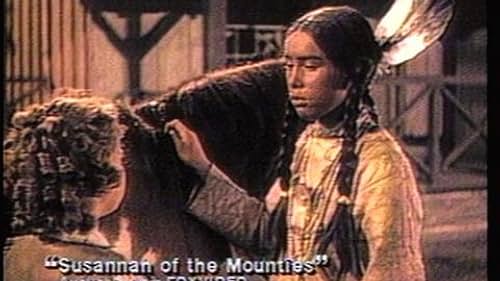Margaret Lockwood(1916-1990)
- Actress
- Writer
- Soundtrack
Karachi-born Margaret Lockwood, daughter of a British colonial railway
clerk, was educated in London and studied to be an actress at the
Italia Conti Drama School. Her first moment on stage came at the age of
12, when she played a fairy in "A Midsummer Night's Dream" in 1928. She
had a bit part in the Drury Lane production of "Cavalcade" in 1932,
before completing her training at the Royal Academy of Dramatic Art.
Her film career began in 1934 with Lorna Doone (1934) and she was already a seasoned performer when Alfred Hitchcock cast her in his thriller, The Lady Vanishes (1938), opposite relative newcomer Michael Redgrave. The film was shot at Islington studios and was "in the can" after just five weeks in 1937 and released the following year. This was her first opportunity to shine, and she gave an intelligent, convincing performance as the inquisitive girl who suspects a conspiracy when an elderly lady (May Whitty) seemingly disappears into thin air during a train journey. Due to the success of the film, Margaret spent some time in Hollywood but was given poor material and soon returned home. Back at Gainsborough, producer Edward Black had planned to pair Lockwood and Redgrave much the same way William Powell and Myrna Loy had been teamed up in the "Thin Man" films in America, but the war intervened and the two were only to appear together in the Carol Reed-directed The Stars Look Down (1940). This was the first of her "bad girl" roles that would effectively redefine her career in the 1940s. In between playing femmes fatales, she had a popular hit in the 1944 melodrama A Lady Surrenders (1944) as a brilliant but fatally ill pianist and was sympathetic enough as a young girl who is possessed by a ghost in A Place of One's Own (1945). However, her best-remembered performances came in two classic Gainsborough period dramas. The first of these, The Man in Grey (1943), co-starring James Mason, was torrid escapist melodrama with Lockwood portraying a treacherous, opportunistic vixen, all the while exuding more sexual allure than was common for films of this period. The enormous popular success of this picture led to her second key role in 1945 (again with Mason) as the cunning and cruel title character of The Wicked Lady (1945), a female Dick Turpin. This was even more daring in its depiction of immorality, and the controversy surrounding the film did no harm at the box office. Some of Lockwood's scenes had to be re-shot for American audiences not accustomed to seeing décolletages. Margaret scored another hit with Bedelia (1946), as a demented serial poisoner, and then played a Gypsy girl accused of murder in the Technicolor romp Jassy (1947).
As her popularity waned in the 1950s she returned to occasional performances on the West End stage and appeared on television, making her greatest impact as a dedicated barrister in the ITV series Justice (1971), which ran from 1971 to 1974.
Her film career began in 1934 with Lorna Doone (1934) and she was already a seasoned performer when Alfred Hitchcock cast her in his thriller, The Lady Vanishes (1938), opposite relative newcomer Michael Redgrave. The film was shot at Islington studios and was "in the can" after just five weeks in 1937 and released the following year. This was her first opportunity to shine, and she gave an intelligent, convincing performance as the inquisitive girl who suspects a conspiracy when an elderly lady (May Whitty) seemingly disappears into thin air during a train journey. Due to the success of the film, Margaret spent some time in Hollywood but was given poor material and soon returned home. Back at Gainsborough, producer Edward Black had planned to pair Lockwood and Redgrave much the same way William Powell and Myrna Loy had been teamed up in the "Thin Man" films in America, but the war intervened and the two were only to appear together in the Carol Reed-directed The Stars Look Down (1940). This was the first of her "bad girl" roles that would effectively redefine her career in the 1940s. In between playing femmes fatales, she had a popular hit in the 1944 melodrama A Lady Surrenders (1944) as a brilliant but fatally ill pianist and was sympathetic enough as a young girl who is possessed by a ghost in A Place of One's Own (1945). However, her best-remembered performances came in two classic Gainsborough period dramas. The first of these, The Man in Grey (1943), co-starring James Mason, was torrid escapist melodrama with Lockwood portraying a treacherous, opportunistic vixen, all the while exuding more sexual allure than was common for films of this period. The enormous popular success of this picture led to her second key role in 1945 (again with Mason) as the cunning and cruel title character of The Wicked Lady (1945), a female Dick Turpin. This was even more daring in its depiction of immorality, and the controversy surrounding the film did no harm at the box office. Some of Lockwood's scenes had to be re-shot for American audiences not accustomed to seeing décolletages. Margaret scored another hit with Bedelia (1946), as a demented serial poisoner, and then played a Gypsy girl accused of murder in the Technicolor romp Jassy (1947).
As her popularity waned in the 1950s she returned to occasional performances on the West End stage and appeared on television, making her greatest impact as a dedicated barrister in the ITV series Justice (1971), which ran from 1971 to 1974.






























![The Lady Vanishes: The Criterion Collection [Blu-Ray]](https://m.media-amazon.com/images/M/MV5BYjY3NzQwNzItNGRiZS00N2U1LTgxZGMtZTcwMWFhZTc0OWNjXkEyXkFqcGdeQXVyNzU1NzE3NTg@._V1_QL75_UX500_CR0,47,500,281_.jpg)